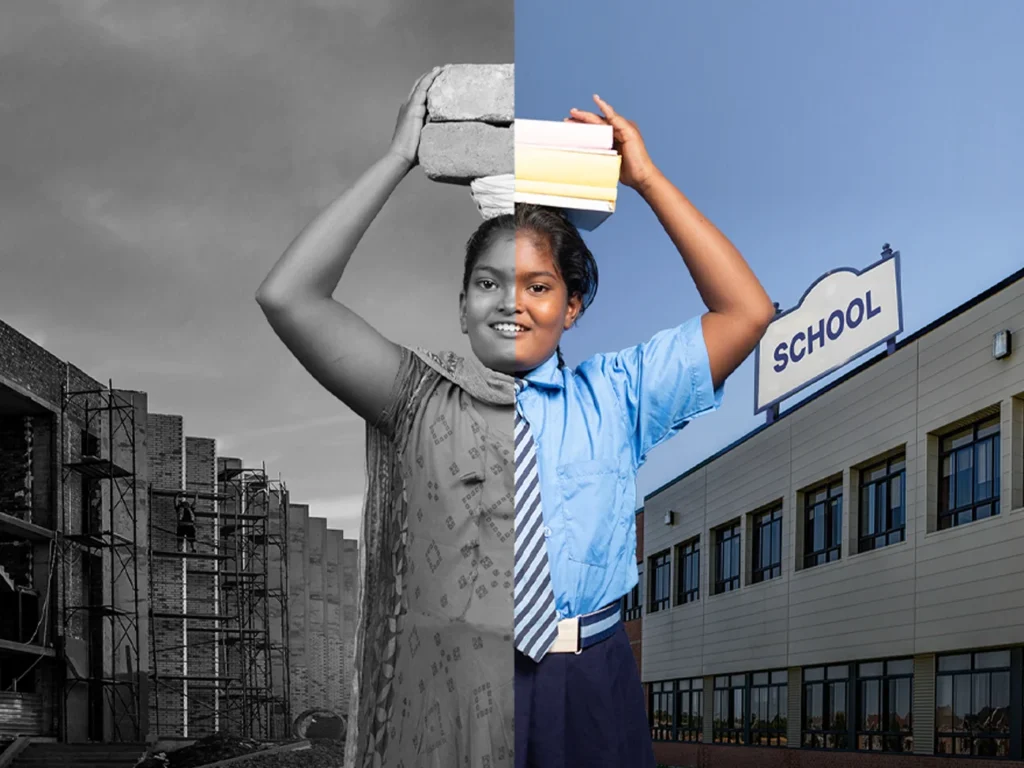In a world where we talk about AI, space travel, and self-driving cars, it’s heartbreaking that millions of children still don’t have access to something as basic as education. Instead, they’re working in factories, fields, and homes, often in dangerous conditions. While we imagine childhood as a time for growth, learning, and play, for many children—especially in developing countries—it’s a time of hard labor and survival.
But why is this still happening in 2025?
A Global Crisis 🌍
Child labor is not just an Indian problem—it’s a global crisis. According to the International Labour Organization (ILO) and UNICEF, over 160 million children worldwide are still involved in child labor as of the latest data.
Out of these, nearly 79 million children are doing work that is hazardous to their health, safety, or moral development.
Top countries with high child labor numbers include:
- India 🇮🇳
- Nigeria 🇳🇬
- Pakistan 🇵🇰
- Bangladesh 🇧🇩
- Democratic Republic of Congo 🇨🇩
- Ethiopia 🇪🇹
These numbers are not just statistics—they’re millions of childhoods lost.
The Indian Reality 🇮🇳
In India alone, despite laws like the Child Labour (Prohibition and Regulation) Act, there are still 10.1 million child laborers between the ages of 5 to 14 (Census 2011). Experts estimate this number could be even higher today due to post-pandemic poverty and school dropouts.
Many kids in rural and urban slums are forced to:
- Work in brick kilns 🧱
- Serve tea in roadside stalls 🍵
- Stitch clothes in sweatshops 👕
- Work in farms harvesting crops 🌾
- Clean homes or take care of younger siblings 🧹👶
Why do they work? One word: poverty.
The Vicious Cycle of Poverty and Illiteracy 🔁
Let’s take a simple example.
A boy named Raju lives in a slum in Delhi. His father is a daily wage worker who lost his job during the pandemic. Raju had to drop out of school and started selling snacks at traffic signals to support his family.
This is not just Raju’s story—it’s the reality of millions of Indian children. When families are struggling to afford two meals a day, sending kids to school becomes a luxury.
Even when schools are free, families can’t afford uniforms, books, or to lose a working hand. Many kids never return to school, getting stuck in low-paying jobs forever. This creates a cycle of generational poverty.
School Isn’t Always Safe or Accessible 🚫🏫
Another hidden truth: Even when education is free, it’s not always safe or effective.
In many remote areas:
- Schools are too far to walk to 🥾
- Teachers are underpaid or absent ❌
- Girls face harassment or lack of toilets 🚻
- Kids are taught in a language they don’t speak at home 🗣️
So, when children or parents feel school won’t help them get ahead—or is even dangerous—they prefer work, despite the risks.
Gender Inequality Plays a Role Too 👧🏽🚺
Girls are often more affected. While boys are sent to work, girls are pulled out of school to help at home—doing chores, fetching water, or caring for siblings.
Child marriage is still a threat in many parts of India, forcing girls out of education forever. According to a UNICEF report, India has the highest number of child brides in the world.
Isn’t Child Labor Illegal? 🚫⚖️
Yes, but enforcement is weak.
India’s laws prohibit employment of children under 14 in most jobs, and under 18 in hazardous work. However, millions still work in the informal sector, where there’s little regulation.
Parents, employers, and even society often see child labor as a “necessity” rather than a crime.
What Can Be Done? 🙌
1. Stronger Enforcement of Laws
Governments must strictly monitor industries and penalize businesses employing children.
2. Financial Support for Families
If families had income support, children wouldn’t need to work. Direct benefit schemes, school meal programs, and subsidies help keep kids in school.
3. Improving School Quality
Better infrastructure, trained teachers, and safe environments will encourage attendance.
4. Community Awareness
NGOs and activists need to raise awareness at the grassroots level so that parents understand the long-term value of education.
5. Corporate Responsibility
Brands must ensure their supply chains are child-labor free—especially in fashion, agriculture, and mining.
Small Steps Make Big Changes 🧒🏾✨
You might wonder—what can I do? Here are a few ways:
- Support NGOs working to end child labor (like Bachpan Bachao Andolan, Save the Children, etc.)
- Volunteer for education drives 📚
- Report instances of child labor in your area 👁️🗨️
- Spread awareness on social media using your voice 💬📲
Final Thoughts 💭
It’s tragic that in 2025, with all our technological advancements, we still fail to protect our children’s futures. No child should have to choose work over school. Every child deserves to dream, learn, and grow. 🎓❤️
Ending child labor isn’t just a legal issue—it’s a moral and social responsibility. As long as even one child is denied a chance to learn, we have work to do.


